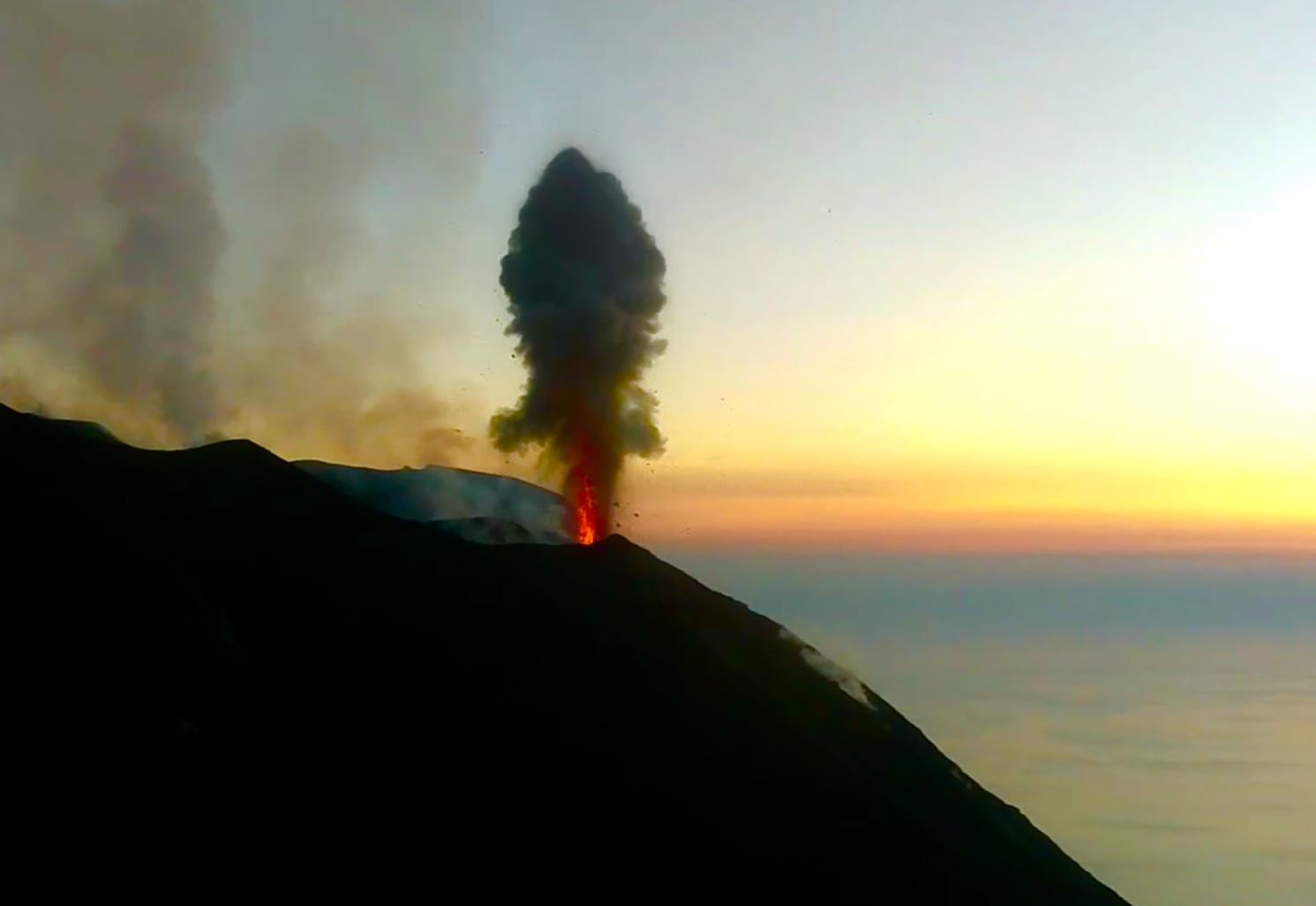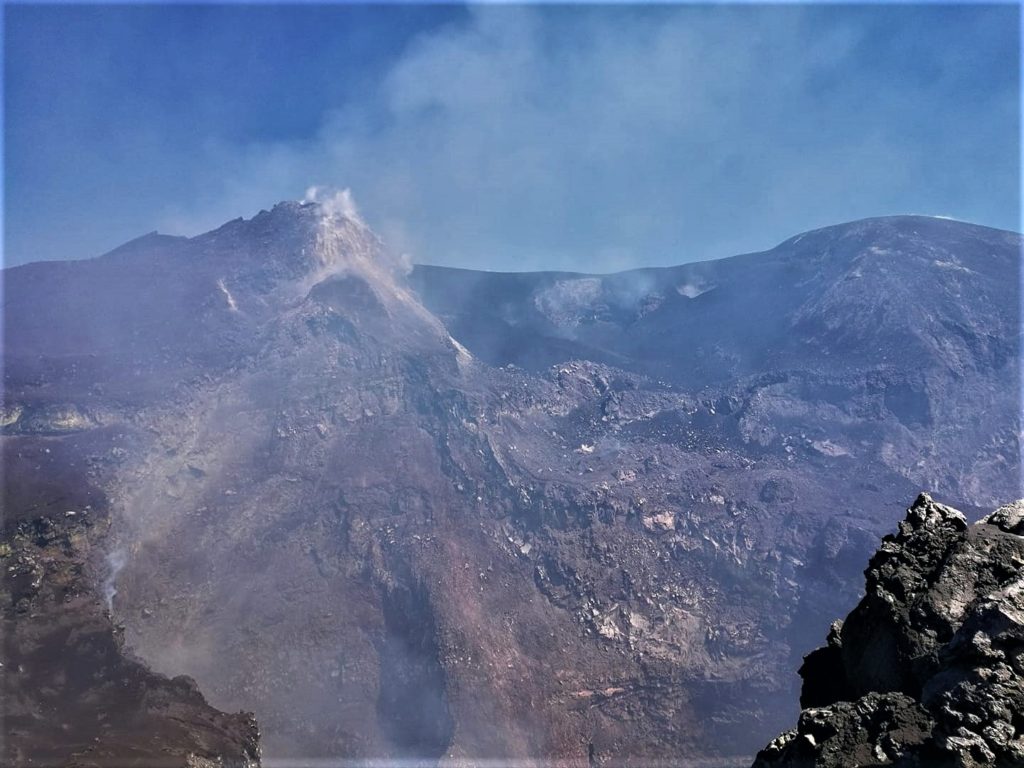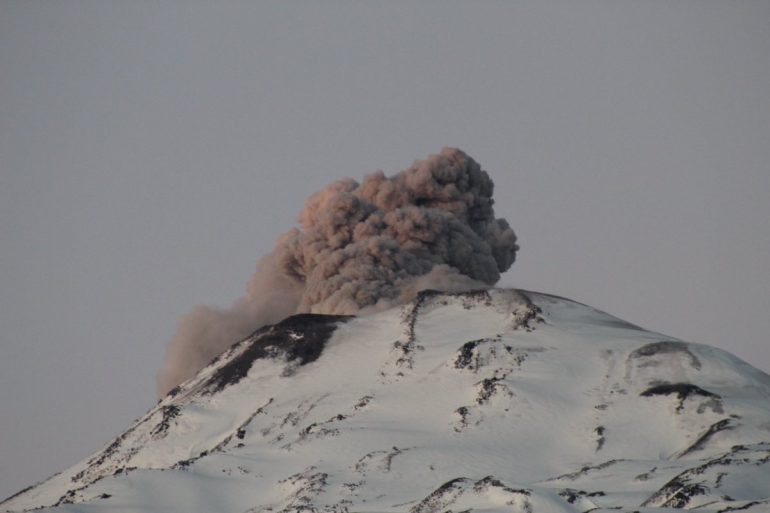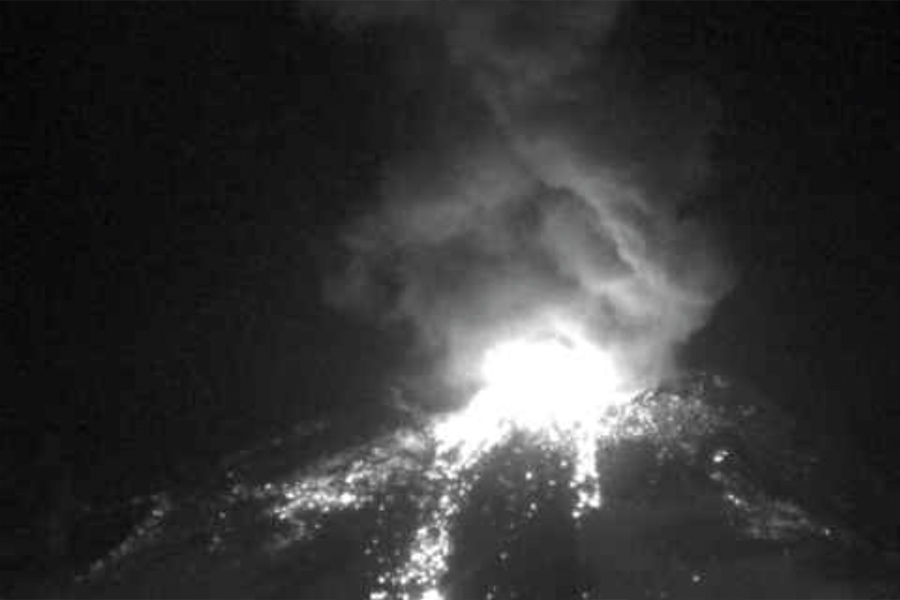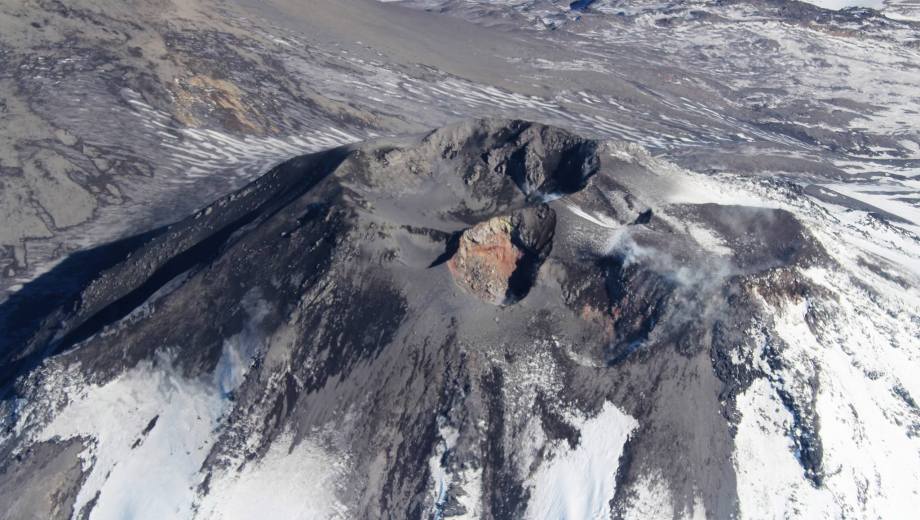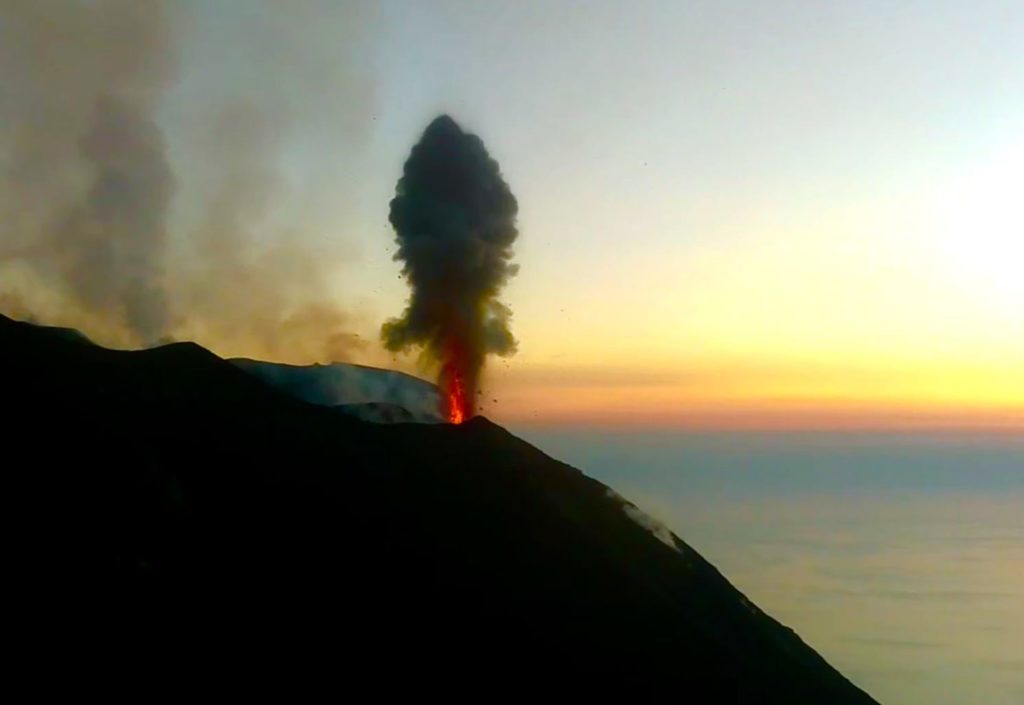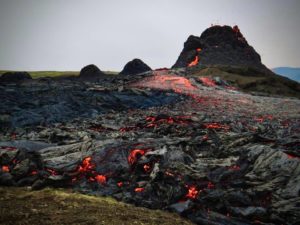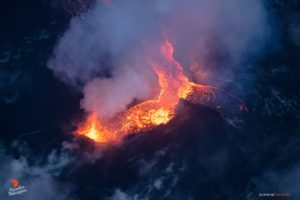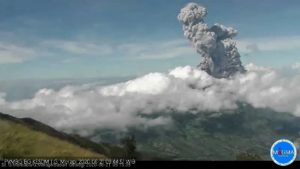September 16 , 2019.
Italy / Sicily , Etna :
COMMUNICATION on the volcanic activity of September 13, 2019 at 16:45:19 (UTC) – ETNA.
The National Institute of Geophysics and Volcanology, Osservatorio Etneo, reports that, thanks to the surveillance cameras and the INGV field staff, it is observed that eruptive activity continues both in the North Crater East and in the crater of Voragine. In particular, since the morning of September 13, the Northeast crater has produced several ash emissions over continuous periods. The ashes were diluted and dispersed in the area of the summit. The crater of Voragine also produced small pulsed ash emissions, smaller than those of the Northeast crater. In addition, strombolian activity characterized mainly by the expulsion of coarse materials was observed in the crater of Voragine.
The flux of SO2 measured by the FLAME Etna network at 15:30 UTC indicated an average daily value of about 2000 t / d, less than the attention threshold of 5000 t / d.
On September 12, from about 10 UTC, the amplitude of the volcanic tremors gradually decreased and returned to persistently low-middle values. Regarding the location of the tremor spring, during the last 24 hours, it is confined to an area between the Southeastern crater and the Voragine crater at altitudes between 2,800 and 3000 m.
Source : INGV Vulcani
Photo : F, Ciancitto (INGV-OE).
Chile , Nevados de Chillan :
Volcanic Activity Report (RAV) Volcanological Observatory of the Southern Andes – Ovdas
Ñuble area, 14 September 2019 17h10 HL Current alert level ORANGE
Seismic activity:
Over the past 24 hours, the CVNCh monitoring network has continued to record episodes of volcano-tectonic (VT), long-period (LP), very long-period (VLP) and tremor (TR) seismic events. , releasing seismic energy at a high level. Seismicity of LP and TR type is frequently related to the occurrence of explosions (EX), which are the cause of a surface activity and, in turn, the emission of lava flow and explosions minor.
Notes: The higher energy VT-type earthquake was located 2.2 km northeast of the active crater at a depth of 1.3 km.
Observations:
When weather conditions permitted, a column of gas of low to medium height, mainly whitish to greyish in some pulses, was recorded from the transmitting center. In addition, incandescent materials were projected in the East and Southeast directions.
Other observations:
Infrasound sensors recorded acoustic signals associated with explosions (EX) with a maximum value of 5.6 Pascals (Pa) reduced to 1 km.
– The MIROVA group (3) reported two (2) thermal anomalies. The largest was related to a moderate power of 9 MW, associated with the active crater sector.
– The network of GNSS stations installed on the volcanic complex continues to record an increase in the length of control lines crossing the crater with maximum values of 1.35 cm / month, calculated for the last 30 days. From the beginning of the present deformation, a cumulative maximum increase of 2.5 cm was observed at the nearest active crater station (1.5 km).
– Based on the observations made during the overflight of Thursday, September 12, 2019, the extrusion of a block lava flow was observed from the Nicanor crater, which is located on the North-North-East slope of the Nuevo volcano and has dimensions of 600 meters in length, 100 meters in width and 5 meters average approximate thickness. Its denomination is evidenced by the surface texture and morphology of the deposits observed, as well as by the presence of incandescent lava at the base of the active crater.
The aforementioned discovery is confirmed by measurements made by a thermal camera, the results of which indicate a maximum surface temperature of around 800 ° C in the active crater and surface temperatures above 100 ° C in the observed lava flow. This new dynamic is also characterized by frequent explosions of high energy, accompanied by ballistic emissions and lava projections which, in some cases, could be seen from the Trancas Valley and Shangri-lá. With regard to the dispersion of ashes, a distribution is maintained according to the direction of the winds. A measurement of the ash deposits, 0.5 cm thick, located 2 km southwest of the active crater, is highlighted.
The background of the instrumental network indicates since mid-July a deformation and an increase of the deep seismicity, which is interpreted as an injection of new material in the internal system. This is consistent with the observations recorded on the surface, particularly as regards the emission of a lava flow in blocks from the active crater. The above indicates a variation of the eruptive cycle, which is no longer dominated by the growth / destruction of the lava dome. On the other hand, although the frequency of explosions has increased, their energy has decreased. Morphological changes in the active crater indicate a growing trend of the Nicanor crater on its southwestern edge, eroding the crater Arrau. Given the instrumental parameters of the internal dynamics of the volcano and the morphological changes observed recently, an explosive scenario of medium to high magnitude is established (IEV = 2 to 3), associated with the possibility of a destabilization of the volcanic system resulting from the mass intake and heat of a new intrusion or a new movement of magma, a process interpreted from the monitoring parameters since the end of July.
Source : Sernageomin.
Photo : Victor Pavez / Ladiscusion , Webcam sernageomin , Rio Negro.
Italy , Stromboli :
Daily bulletin of 15/09/2019.
In light of the surveillance data, we highlight:
VOLCANOLOGICAL OBSERVATIONS: Normal explosive activity of Strombolian type accompanied by degassing activities.
SISMOLOGY: The seismological parameters do not show any significant changes.
DEFORMATIONS: No significant change
GEOCHIMY: SO2 flux at a medium-low level.
According to surveillance camera observations at 400 m altitude and at Punta Corvi, conducted between 14h00 hours on 14 September 2019 and 10h30 hours on 15 September 2019, an ordinary strombolian activity was detected from several active mouths in the North and Central-South craters. The explosions protrude from the edge of the crater terrace and the products often overflow onto the top of the Sciara del Fuoco. In conclusion, compared to what is reported in the bulletin of 14 September 2019, the observations indicate that the activity remains stable and virtually unchanged.
Seismology:
The bulletin is established with data acquired from a maximum of 7 stations. The seismic activity recorded during the last 24 hours has the following characteristics: No seismic signal associated with a landslide has been recorded. Very long period (VLP) event counting provides an average of about 28 events / hour. The magnitude of the VLV events showed values generally between low and medium / low. The amplitude of the explosion earthquakes showed values generally between low and medium low.
Source : INGV Vulcani.
Read the full report: file:///C:/Users/Utilisateur/AppData/Local/Packages/Microsoft.MicrosoftEdge_8wekyb3d8bbwe/TempState/Downloads/BollettinoGiornalieroStromboli20190915%20(1).pdf
Photo : Webcam via Wolfgang Künker
Guatemala , Pacaya :
SPECIAL VOLCANOLOGICAL BULLETIN.
Guatemala 13 September 2019, 11:15 (local time) INCREASE IN THE ACTIVITY of VOLCÁN PACAYA (1402-11)
In recent days, seismic activity on the Pacaya volcano has increased. As shown in the RSAM chart, this activity began on September 8th and today reaches its highest activity range of about 7,000 RSAM units.
According to OVPAC reports, this activity is associated with an increase in explosive activity generating material expulsions up to 75 meters above the intra-crater cone and which also contributes to the formation of this cone due to accumulation of materials. These explosions produce small rumblings that are sensitive to the vicinity of the Mackenney cone with the probability of being sensitive to a greater distance during the evolution of the activity.
In addition, there is an increase in the flow of lava flows whose current emission point is located towards the northwest flank. These lava flows today descend to Cerro Chino with an approximate length of 500 meters and an increase in radiation levels. Because of the slope of the Mackenney cone in the region where lava flows are generated, there are constant avalanches of the flow front, where incandescent blocks up to one meter in diameter are observed.
Due to the presence of this activity, the possibility that lava flows are generated in greater quantities and their recurrence is not excluded. A new eruptive phase could be started in the next days or months.
Source : Insivumeh.
Photo : Nelo via Sherine France.

